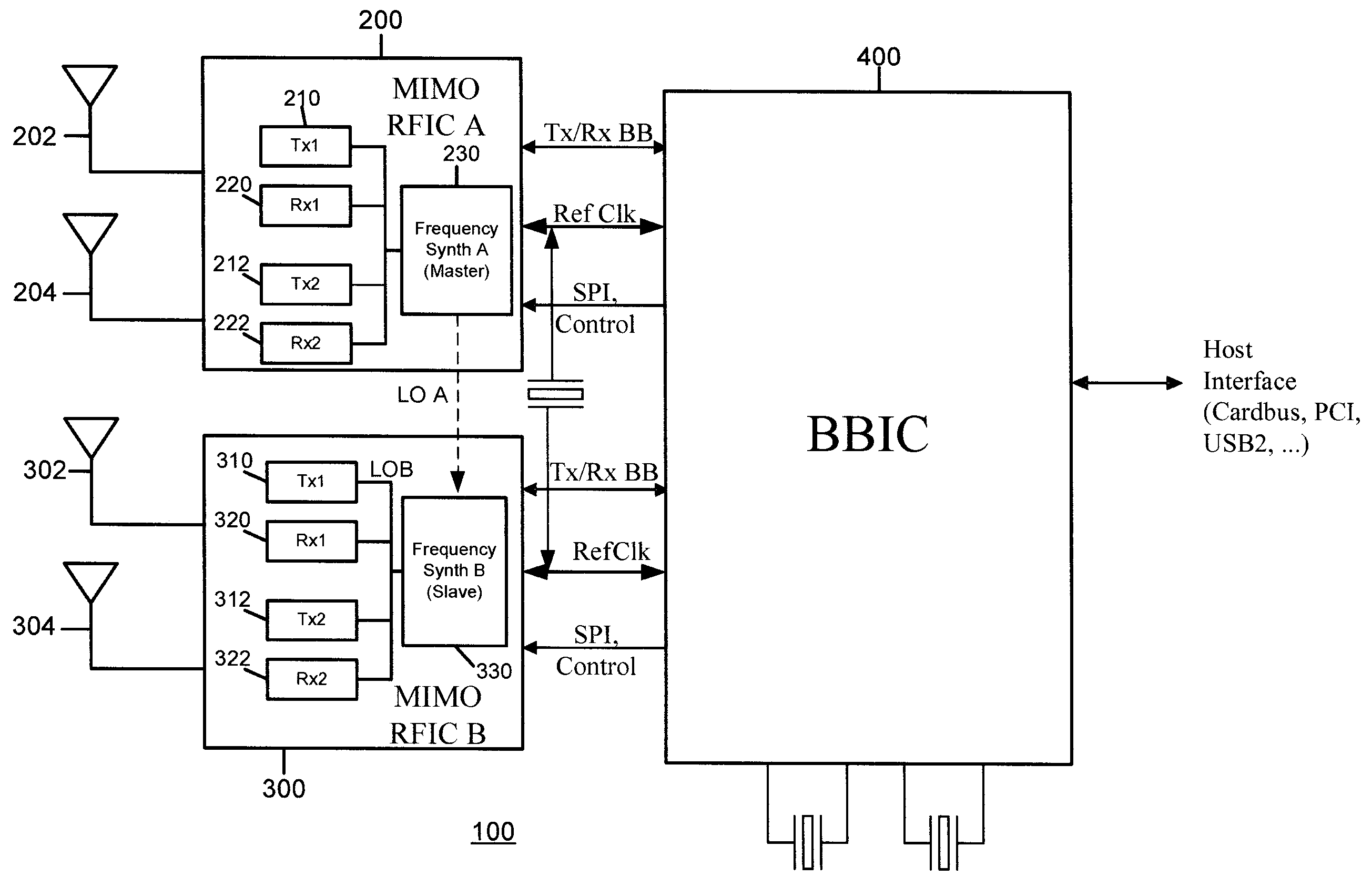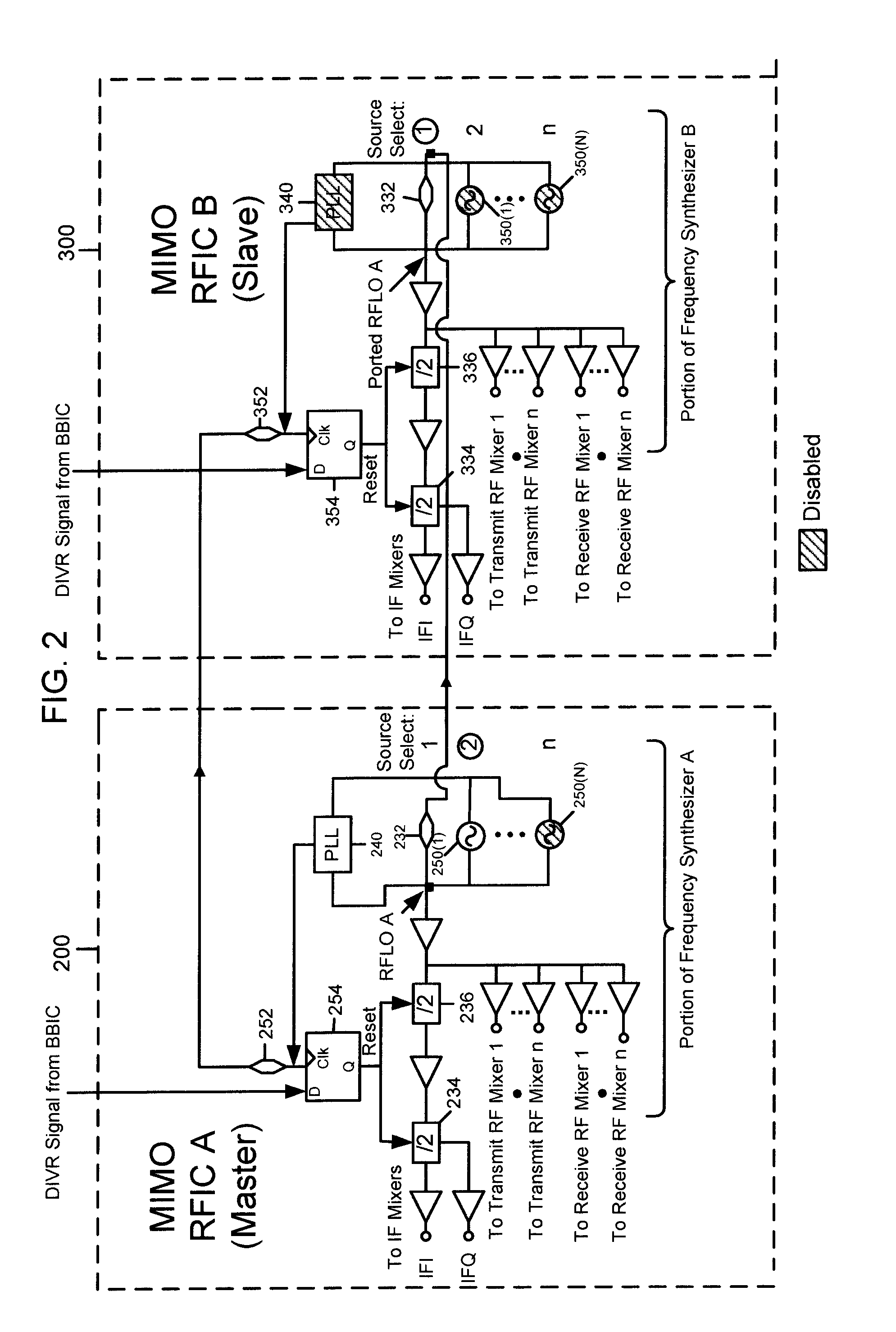Master-Slave Local Oscillator Porting Between Radio Integrated Circuits
- Summary
- Abstract
- Description
- Claims
- Application Information
AI Technical Summary
Benefits of technology
Problems solved by technology
Method used
Image
Examples
Embodiment Construction
[0014]FIG. 1 shows a block diagram of a radio communication device 100 capable of 4 antenna path (4×) MIMO radio communication. One way to provide 4× capability is to deploy two MIMO radio integrated circuits (ICs), each having two transmitters and two receivers, for cooperative use by a baseband signal processor or integrated circuit (BBIC). An example of a fully integrated MIMO radio frequency IC (MIMO RFIC) is disclosed in aforementioned U.S. application Ser. No. 10 / 065,388, filed Oct. 11, 2002. In general, each RFIC may have N transmitters and N receivers.
[0015] There are two MIMO RFICs 200 and 300 shown in FIG. 1, RFIC 200 designated RFIC A and RFIC 300 designated RFIC B. Each RFIC 200 and 300 has at least two radio transmitters (Tx's) and two radio receivers (Rx's), connected to operate with a corresponding one of the two antennas. Specifically, RFIC 200 has Tx1210, Tx2212, Rx1220 and Rx2222, and RFIC 300 has Tx1310, Tx2312, Rx1320 and Rx2322. In RFIC 200, Tx1210 and Rx1220 c...
PUM
 Login to View More
Login to View More Abstract
Description
Claims
Application Information
 Login to View More
Login to View More - R&D
- Intellectual Property
- Life Sciences
- Materials
- Tech Scout
- Unparalleled Data Quality
- Higher Quality Content
- 60% Fewer Hallucinations
Browse by: Latest US Patents, China's latest patents, Technical Efficacy Thesaurus, Application Domain, Technology Topic, Popular Technical Reports.
© 2025 PatSnap. All rights reserved.Legal|Privacy policy|Modern Slavery Act Transparency Statement|Sitemap|About US| Contact US: help@patsnap.com



